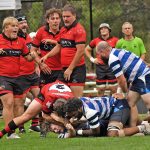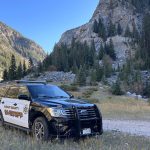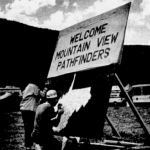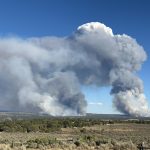Sange Sherpa’s trek from Everest to Vail is a series of miracles, rescues

David Snow|Special to the Daily |
To help
A GoFundMe page has been established for Dawa Sange Sherpa at http://www.gofundme.com/hopeforsange.
You can also help by hosting Sange for a weekend or a couple of days while he’s in Colorado, to help his host family during this time.
To help please contact:
Karsang Sherpa
Ksherpa@gmail.com">Text">Ksherpa@gmail.com
303-588-3401
VAIL — Dawa Sange Sherpa’s story is the tale of two rescues and a series of miracles.
Rescue No. 1 was May 21. The 21-year-old Nepali mountain guide had finished his first Mount Everest summit, a tortuous affair with a reportedly obstinate Pakistani client who refused to turn back despite murderous weather. Sange stayed with his client, despite advice from older Sherpa guides to turn back.
Sange was found unconscious just below the summit, exhausted and resigned that he would soon die and become one with the mountain. He and his client were rescued by Ang Tshering Lama, founder of Angs Himalayan Adventures, and a group of Sherpas.
Rescue No. 2 was eight weeks ago. Sange was in Norvic hospital in Kathmandu waiting for his frostbitten hands to be amputated. Again, he was rescued, this time by the Kees Brenninkmeyer Foundation, Karsang Sherpa and Dr. Ellen Gallant, who brought him from Kathmandu to Vail, where Dr. Randy Viola with the Steadman Clinic is surgically reconfiguring some of the fingers and thumbs on Sange’s damaged hands.
So, how’s he doing now?

Support Local Journalism
“I am good,” Sange said, smiling quietly from his bed in the Vail hospital.
He is alive, but he’s frightened, completely out of his element and he’s in pain, Viola said.
“It will be worth it, though,” Viola said.
Vail and Viola
Dr. Tom Hackett is a hardcore mountaineer. He’s with the Steadman Clinic and is affiliated with the Kees Brenninkmeyer Foundation, and that foundation is how Sange came to his attention.
Hackett strolled up the hall to Viola to see what could be done for Sange. More than you might think, it turns out.
“This kid lost every digit,” Viola said.
Sange’s hands won’t look like they did before his frostbite. They’ll have a thumb and some makeshift fingers.
Viola said they have three goals: For Sange to be able to pinch, to hook and have a basic grip.
“I think he’s terrified about what I’m doing,” Viola said.
It appears miraculous, but Viola said modestly that he’s using a technique that has been around for decades and that he has used it before. It seems simple when Viola explains it, as complex things do when in the hands of the greats.
Essentially, Viola is transplanting bone to create fingers and thumbs that were destroyed by frostbite on Mount Everest. He took skin from Sange’s abdomen and thigh and rolled it into a tube to create skin around the transplanted bone.
Then Viola basically sewed Sange’s hand into his abdomen so blood would flow to it and tissue would grow.
“The principles are straightforward. If you need a part, you sew the hand into the abdomen and the blood supply regrows the tissue, and that will be part of the hand,” Viola said.
How we’re here
Sange is a delightful young man, the oldest in his family of five children. He was in a hurry to become a mountain guide because it pays more than being a porter, and his family needs the money. He said he wanted to follow in the footsteps of his father and uncle, who also guided on Everest.
On May 21, the peak of Everest’s spring climbing season, Sange was on his way to the summit of Mount Everest for the first time, guiding a client from Pakistan, Col. Abdul Jabbar Bhatti, on the Nepal side of Everest. Bhatti was hoping to become the fourth Pakistani to summit.
Sange had just finished guiding a Utah group trekking to Everest Base Camp. When they were done, Sange went to work with Bhatti.
The climb to the summit turned out to be an 18-hour slog through deadly weather. Wind and snow froze their masks, goggles, water and oxygen supply. The older guides stayed in touch with Sange by walkie talkie and kept advising him to turn back. Sange said he kept asking Bhatti to turn back, but Bhatti kept refusing, citing the money he was spending.
The older Sherpa guides finally told Sange to turn back and save himself, even if he had to leave Bhatti.
Sange, though, stayed with his client, a decision that almost killed him.
They reached the summit at 3 p.m. that day, inching up the world’s tallest mountain for 18 hours after they had left Camp 4. Any summit after 12 noon is considered too late in the day to be safe, say expert alpinists. Sange and Bhatti spent only five minutes on the summit.
The weather turned from bad to worse as they started their descent.
Sange had chosen not use supplemental oxygen on the ascent, saving it for the descent. He gave his last bottle to Bhatti on their way down.
It didn’t help. They were both losing their will to live, Sange said.
Bhatti walked very slowly, Sange said, and it began to grow dark.
“When I looked for my client, he was resting on the ridge just few meters away from me. I called him a lot but he didn’t respond me at all,” Sange said.
Bhatti was too weak to walk or talk, Sange said, and so was he.
Sange inhaled some oxygen, but was so exhausted that it didn’t help. He soon passed out.
“I was too tired and I didn’t realize when I went to sleep,” Sange said.
The noise of other climbers woke him, but he could see nothing but the bright white ice and snow, he said. He could not move his fingers or his body, but shifted enough in the snow that they realized he was alive.
“Otherwise the climbers walking nearby would have considered me dead and left me there,” Sange said.
He could feel nothing in his hands, and realized they were completely frost bitten. He said he relaxed and prepared to let go of this life.
“I was very hopeless and tired. I could have easily closed my eyes and become a permanent member of the mountain. It would have been more peaceful than suffering,” Sange said.
But the mountain would not take him that day.
A group from Sherpa Khangri Outdoor had seen Sange and Bhatti earlier and happened across them again just below the summit as they drifted toward death.
Ang Tshering Lama is a wilderness first responder. The group of Sherpas with him — Nima Galzen Sherpa, Jangbu Ang Mingma Chhiri Sherpa and Pema Chirring Sherpa — pulled Sange and Bhatti away from death and toward Camp 4.
Sange landed in Norvic Hospital, which has no experience dealing with frostbite victims, said Karsang Sherpa, a Denver-based investment professional who is instrumental in helping Sange.
“He was essentially waiting for all his fingers to get amputated,” Karsang said. “I just couldn’t bear the thought of a 21-year-old mountain guide losing all his fingers.”
Karsang reached out to the Kees Brenninkmeyer Foundation, which provides support for alpine-industry professionals who need orthopedic care to continue their careers. That brought him to Hackett’s attention, and eventually to Vail.
It takes a village
Dr. Ellen Gallant is a cardiologist in Jackson, Wyoming. This year was her first Everest summit, and it was 15 years in the making.
In Jackson, she’s in the lifesaving business, and business has been brisk during her Everest expeditions.
She was on Everest in 2014 when an ice fall killed 16 Sherpas.
She was back on Everest in 2015 when the earthquakes hit and killed dozens of people on the mountain and tens of thousands more around Nepal.
She skipped 2016 and tried again this year. That put her in Camp 4, preparing for her summit assault, when Sange was being brought down by Ang Tshering Lama and the other Sherpas.
Bhatti was brought down first, and the Sherpas asked Gallant to help him. An hour later, they called her again, as Sange was being literally dragged across the surface of the snow to Camp 4.
The rescuers had found him without gloves on, and his hands were frozen into claws, Gallant said. She rubbed him but elicited nothing more than a moan.
“I didn’t think he would live more than an hour,” Gallant said.
She gave him some medications she had packed along, and he revived.
The weather that drove Sange and Bhatti off the summit so quickly stayed with them in Camp 4. He was stranded there two days before he could be taken further down Everest to Camp 2 for a helicopter evacuation to Norvic hospital in Kathmandu, Nepal.
He was there 20 days and received no treatment. No one even bathed him, Gallant said.
Karsang Sherpa knows a guy who knows a guy, and they got Sange moved to Dr. Prativa Pandey and CIWEC Clinic, where expert doctors and proper treatment were waiting for him.
Gallant knows a guy in Jackson, Wyoming, who knows Lawrence Jones, the consulate general of the U.S. embassy in Nepal. Jones paved the way for Sange to come to the United States and Vail for the hand surgeries.
Send me
Gallant agreed to fly back to Kathmandu to accompany Sange to the United States. She landed on a Sunday and met Sange. It was the first time she had seen him sitting up and not horizontal in the throes of death, she said.
They went to the U.S. Embassy on Monday, met Sange’s family on Tuesday and boarded a plane back to the United States on Wednesday — Nepal to Abu Dhabi to Chicago. Each step came with its own set of issues, mostly involving questions about why Sange’s hands were bandaged.
“Why are his hands bandaged?” officials would ask.
“I’d answer, ‘Here’s why,’ and produce the photos of Sange’s hands,” Gallant said. “Seeing this young man go from his condition in Camp 4 to Vail warms my heart.”
The return trip from Nepal was 30 hours. Sange had no use of his hands and had to be fed, which Gallant could do.
The bathroom was another matter. She said in the 32-hour flight, Sange let her take him to the bathroom only twice.
‘We won’t abandon Sange’
David Snow was one of those Utah trekkers who Sange led to Everest Base Camp. He told Karsang Sherpa they were impressed with Sange while he was with them, and more so after learning that he would not abandon his client. Snow and others have established a GoFundMe page for Sange.
“Sange would not abandon his client — we won’t abandon Sange,” Snow said.
Sange said he is healing in so many ways. While he’s under Viola’s care, he is staying with a host Sherpa family in Gypsum.
“Sange has been so gracious and kind. There is no anger toward anything that happened. It’s a lesson in life,” Gallant said.
Karsang Sherpa is an investment professional with a private equity fund based in Denver. Without him and blogger Alan Arnette, alanarnette,com, this story would not have been possible.
Staff Writer Randy Wyrick can be reached at 970-748-2935 and rwyrick@vaildaily.com.











